Month: March 2014
-
Zareen Jaffery: How I Got into Publishing
Executive Editor at Simon & Schuster
The day I got my first interview in publishing, I was kind of a disaster. I really wanted to be an editor—or at that point, an editorial assistant. I wasn’t thinking as far ahead as editor since I could barely get my foot in the door.
From the outside, publishing can seem like an insular industry, where entry-level employees are hired based on who they know—whether through personal connections, internships, or a graduate level publishing course. And certainly, people do get hired via those methods. I had none of those things, and really worried that I wouldn’t be able to get hired because I wasn’t connected enough.
I’m one of those people who has a hard time asking for help, and really what I should have done is get in touch with my college professors—some of whom were published authors and undoubtedly knew editors and agents—and ask for introductions. My shyness kept me from doing that.
So I dutifully sent my resume to publishing houses and magazines (I was interested in both at that point) via their online job listings. I’d been temping at an investment bank in the HR department for several months, and there was a moment where I could have stayed on there full-time, but I knew that I needed to at least try to work in publishing, or I would always regret it. After all, I had a real love of reading, and nothing resembling even liking for either investment banking or human resources. Finally, I got two interviews scheduled for the same day: Scientific American magazine, and Harlequin.
The Scientific American interview was first. And, boy, did I bomb that interview. I was incredibly nervous, had put way too much pressure on myself, and ended up getting so tongue-tied, I was barely coherent.
When I left their office, I was pretty much in tears from being disappointed in myself. But I wiped those away and gave myself a Stuart Smalley-esque pep talk as I walked over to Harlequin.
And it worked! The interview went great and I left with a manuscript editing test which I knew I would rock. My first job in publishing became editorial assistant at Red Dress Ink, a division of Harlequin that was focusing on the then-burgeoning chick-lit trend.

From there, I moved around quite a bit—eventually moving from editing chick lit and romance, to a house that focused mainly on non-fiction and commercial fiction. About five years in to my publishing career I realized my real love was children’s books. This was not solely because of the Harry Potter phenomenon (though that helped!). My brother, who was in high school at the time, handed me a book he’d had to read for school that he thought I’d like. It was Laurie Halse Anderson’s Speak. I loved it. It was so exquisitely written and moving. So I started reading everything YA and middle grade I could get my hands on. And even ended up co-writing a YA novel with a friend of mine.
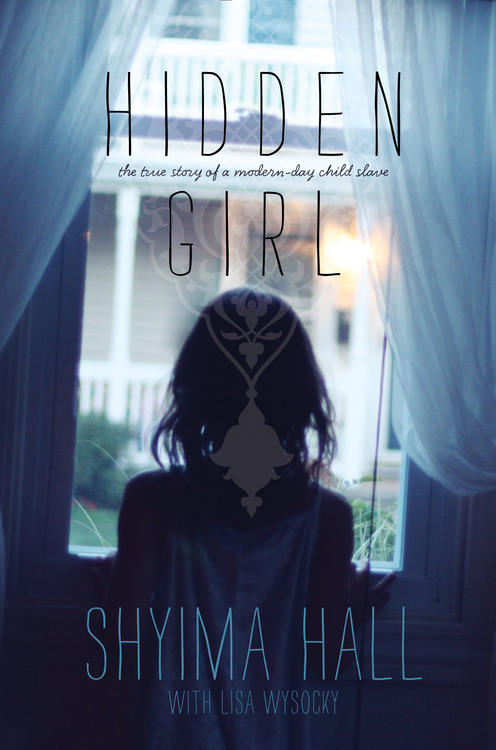
When a position opened up at HarperTeen, Farrin Jacobs, a friend and former colleague of mine from Harlequin was working there. I expressed interest and interviewed with several people before I got the job. My knowledge of (and enthusiasm for) the books that were being published, and networking with kids lit editors and agents, helped my case. What people don’t tell you about publishing is that more than half your job requires being social—this is an industry based on relationships. Those “connections” I had been afraid of before I started my career were more about having people vouch for your work ethic than about nepotism. And every job I’ve gotten since Harlequin, I’ve gotten the interview through people who I’ve worked with.
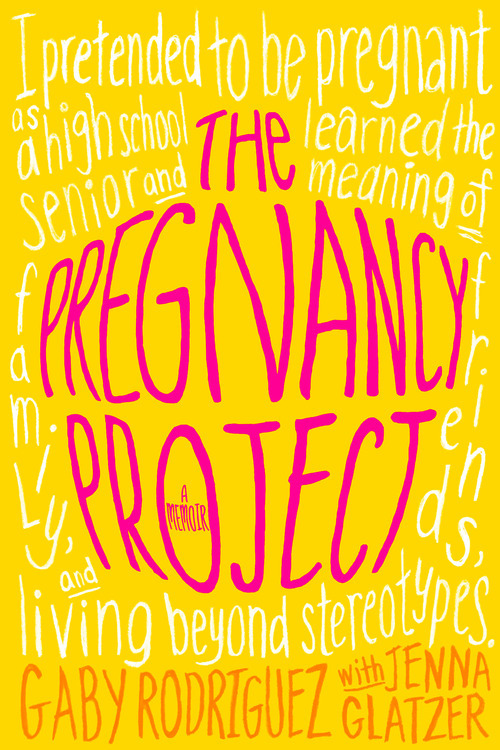
Also, in making the transition from adult books to kid’s book, I think it was tough to bring someone in who hadn’t “grown up” in children’s publishing. It really is a different world from adult publishing—though there is now more overlap thanks to so many adults reading YA fiction in the post-Twilight years.
Moving to children’s publishing was the best career decision I’ve ever made. There is something so special and rewarding about publishing books that may help spark a kid’s lifelong love of reading.
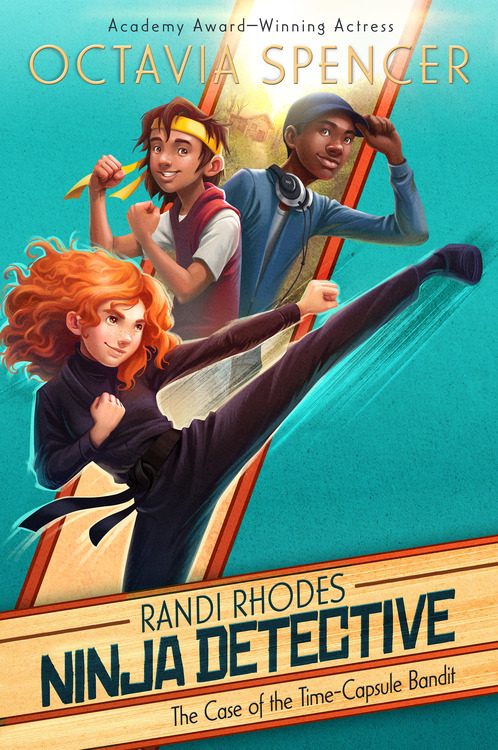
I’ve been at Simon & Schuster Books for Young Readers for three years, and have had the opportunity to work on some amazing books. My role focuses on commercial fiction and non-fiction, so the books I bring in have to appeal to a wide audience. I’ve been lucky enough to work on several books that feature diverse characters, or are written by writers of color. Most recently, that list includes Octavia Spencer’s middle grade series, Randi Rhodes, Ninja Detective and the soon-to-be-published teen novel, To All The Boys I’ve Loved Before by Jenny Han. And I’ve been honored to work on two memoirs, The Pregnancy Project by Gaby Rodriguez and Hidden Girl by Shyima Hall. I look forward to publishing many more!
-
Scholastic to Launch “Worlds Collide” Initiative Bringing Together Authors & Fans of Bestselling Multi-platform Series The 39 clues®, Infinity Ring®, & Spirit Animals™
New York, NY — Scholastic, the global children’s publishing, education and media company, and the pioneering publisher of the bestselling multi-platform series The 39 Clues®, Infinity Ring®, and Spirit Animals™, announces the “Worlds Collide” …
-
A Letter From the CBC and ECAR About the Children’s Choice Book Awards Finalists
Dear children’s literature community — We at the Children’s Book Council and Every Child a Reader sincerely appreciate your concerns about this year’s Children’s Choice Book Awards, and wanted to …
-
Diversity 101: The Multiracial Experience
Contributed to CBC Diversity by Monica Brown
In the 2013 Census, nine million people selected more than one race. In states like California, where I grew up, as well as Texas, and New York, half a million or more people, in each of these states, marked multiple-races. Yet when I became a mother of two beautiful daughters, Isabella and Juliana, I looked around and couldn’t find books that represented the multiplicity of our experiences as a family of two continents, many races, and diverse cultural traditions. We are a nation of boxes, and until the 2000 census, we could mark only one. It is unfortunate that many of our children’s books mirror only part of our culture and that many voices still go unheard.
My Personal Connection
My daughter, Isabella (named in honor of my mother Isabel Maria) was born in 1997 in Tennessee. We were living in a region of Tennessee where there were very few Latinos and race was defined in terms of black and white. In the hospital, the nurses informed me that they adored my daughter, with her shock of black spiky hair, and that they called her “our little Eskimo.” My own family said, “She sure looks like a Valdivieso!” and yes, with in her dark eyes, light olive skin and beautiful black hair, I saw the face of my mestiza Peruvian Grandmother. But she also shared roots in Jewish Romania and Hungary, Scotland, and Italy. From my husband Jeff, came Sweden, Norway, Ireland, and Germany. Surely a citizen of the world was born on that day in 1997.
“The little Eskimo” was the first box my Isabella was put in. Because if you look “ambiguously ethnic”(and here I borrow Sherman Alexie’s phrase), people want to place you.
Recently, my daughter’s teacher used her as an example during a class discussion of Nazi Germany, stating “Because of her global ethnic origins, Isabella is an example of what the Nazis would have classified as Negroid.” He then pointed out blond students as examples of what the Nazis would have called “Aryan superiority.” I am sure the teacher intended the exercise to illustrate the absurdity of white supremacy, but I am still struck by the ways my multiracial teen, and other ethnically diverse students, are still put in boxes and on display.
Terminology
There are many words associated with multiracial people, some negative and some positive. I prefer mestiza, because it encompasses both my European and Peruvian indigenous origins. But that’s technically (or at least historically) incorrect because while I have Spanish and Indigenous Peruvian origins on my mother’s side, I also have Eastern European Jewish, Western European and African origins. Some people prefer the terms “mixed,” others “biracial.” Of the choices available, I choose “multiracial.” President Obama has jokingly called himself a mutt, and there are other terms meant to be humorous that I feel uncomfortable with. Though I’ve described myself as “half Peruvian” or “half Jewish” as a shortcut in the past, I fully reject those terms now. I am not half of anything. I am whole in myself, as are my daughters. I am the Latina daughter of a Latina woman. I am bilingual. I am the face of a complex, multiracial, multilingual, and multicultural past, present and future. As with any other groups, we must respect and listen to how people choose to self-identify.
Great Examples to Follow
There are very few picture books representing the multiracial experience, and of those, most focus only on color itself, not culture, and stay at very surface levels. Books such as Black Is Brown Is Tan (HarperCollins 1973/ 2002), by Arnold Adoff, Black, White, Just Right (Albert Whitman & Co. 1993) by Marguerite W. Davol, and The Colors of Us (Macmillan 2002), by Karen Katz, and are lovely, representing joyful multiracial families. Black Is Brown Is Tan was the first picture book, to my knowledge, to depict a multiracial family. In the book, Adoff writes poetically:
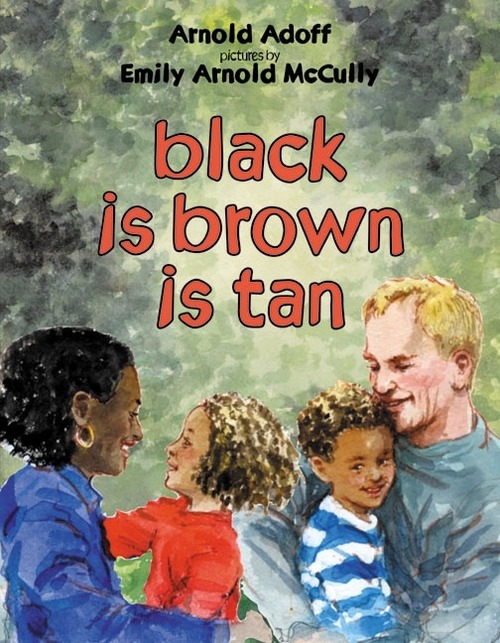
black is brown is tan
is girl is boy
is nose is
face
is all
the
colors
of the race
Adoff also mentions the individual characters in terms of color:
granny white and grandma black
kissing both your cheeks
and hugging back
Similarly, Karen Katz’s young protagonist gets ready to paint her friends, and focuses on color: “I think about all the wonderful colors I will make and I say their names out loud. Cinnamon, chocolate, and honey. Coffee, toffee, and butterscotch. They sound so delicious.” The clear message is all colors are beautiful. In Black and White, Just Right, Marguerite Davol writes, “Mama’s face is chestnut brown. Her Dark brown eyes are bright as bees. Papa’s face turns pink in the sun; his blue eyes squinch up when he smiles. My face? I look like both of them—a little dark, a little light. Mama and Papa say, ‘just right!” The illustrations include smiling images and text to match.
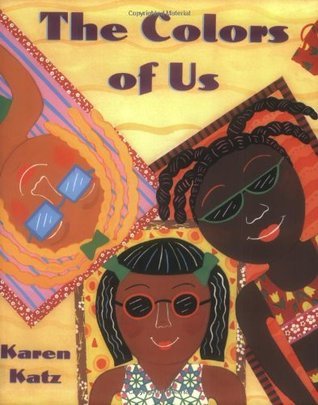
I respect these authors and publishers for putting positive images of multiracial families out there, because I know from personal experience just how difficult it can be to place these stories. Of my many published children’s books, my semi-autobiographical story Marisol McDonald Doesn’t Match/Marisol McDonald no combina (Lee and Low, 2011), illustrated by Sara Palacios, received the most rejections from publishers, which is ironic as it has resonated both critically and with children across the nation, winning multiple awards and starred reviews. It is now in its fifth printing!
Marisol McDonald is the daughter of two cultures and two languages who sometimes gets teased for being different. Her story affirms the power of being oneself. Marisol claims and redefines the idea of being “mismatched” and makes that label something marvelously her own. In the sequel Marisol McDonald and the Clash Bash/Marisol McDonald y la fiesta sin igual (Lee and Low, 2013), Marisol turns eight and continues to celebrate her individuality, while grappling with missing her Abuelita, who can’t get papers to visit from Peru.
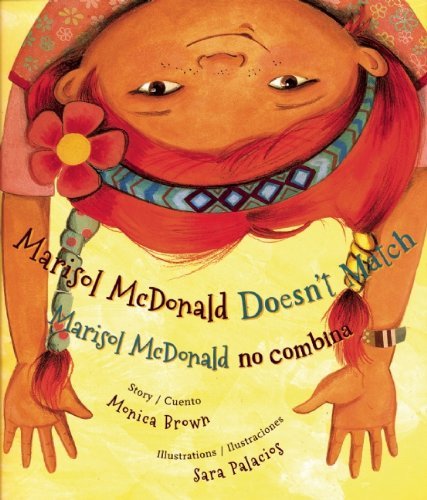
What I’d Like to See
I participate in book festivals and visit schools all over the country, and everywhere I go, I meet children who tell me, “I am Marisol McDonald!” and “She is me!” This doesn’t mean that they have olive skin and red hair, or that they are Peruvian and Scottish. Rather these exclamations of joy mean that young readers see themselves in this girl whose ethnic diversity and unique choices do not divide her, but makes her beautifully whole.
Children don’t see themselves in boxes. I think we are ready for more diverse and realistic renditions of the joy (and challenges) of the multiracial experience in our children’s picture books. Our children are beautiful blends of many cultural traditions, with roots and history here in the United States, as well as Africa, Asia, Native America, Latin America, Europe, and the Middle East. We are bilingual, multilingual, and our families’ religious traditions may also be diverse. It’s time that our children’s literature holds up a mirror that has room for all our reflections.

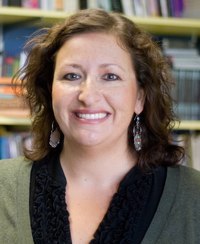
Monica Brown, Ph.D. is the author of more than a dozen picture books, including, Tito Puente: Mambo King/Rey del mambo, which won a Pura Belpré Honor for Illustration, the Christopher Award-winning Waiting for the Biblioburro, and the NCTE Orbis Pictus Honor book Pablo Neruda: Poet of the People. Finally, she is the author of the Marsiol McDonald series. Monica Brown will be speaking and signing her books at the Texas Library Association Conference in April 2014. Find out more about Monica at www.monicabrown.net or like her author page on Facebook.
-
#1 New York Times Bestselling Author Scott Westerfeld to Publish a New YA Novel with Pulse
NEW YORK – Pulse, an imprint of Simon & Schuster Children’s Publishing, has announced today that Afterworlds, a young adult novel written by Scott Westerfeld, will be published on September 23, 2014. Scott …
-
Voting for the 7th Annual Children’s Choice Book Awards Opens March 25, 2014!
The only national book awards program where the winners are selected by children and teens. Last year, over 1,000,000 votes were cast by young readers! This year’s finalists …
-
The Eric Carle Museum of Picture Book Art Seeks Public Submissions for its ‘What’s Your Favorite Animal?’ Exhibition
Amherst, MA — The Eric Carle Museum of Picture Book Art is creating a special exhibition to celebrate the new book What’s Your Favorite Animal? by Eric Carle and Friends. The Museum will showcase …
-
Laney Nielson Wins Cynthia Leitich Smith Mentor Award
“Laney’s manuscript, ‘Shattered,’ was chosen as the winner due to its charm, humor, and kid appeal,” said Cynthia. “The quality of finalists’ writing, obvious potential, and wide variety of their …
-
Children’s Authors Participate in the Twitter Fiction Festival
The organizers also plan to host the #TwitterFiction Festival Live! event in New York City. R.L. Stine, a prolific children’s horror author, will join in for a night of storytelling. …
-
Harriet and Scout: “How To Be a Good Bad American Girl”
“The story of a six-year-old girl observing the oppressive racial politics of the fictional Maycomb, Alabama, in the nineteen-thirties may not seem to much resemble that of a sophisticated, eleven-year-old …
-
Simon & Schuster Books For Young Readers to Publish Dual Transgender Teen Memoirs
New York, New York, March 11th — Simon & Schuster Books for Young Readers is thrilled to publish SOME ASSEMBLY REQUIRED: THE NOT SO SECRET LIFE OF A TRANSGENDER TEEN by eighteen-year-old Arin …
-
Emerging Children’s Authors: Apply for the BPL’s Writer-In-Residence Program!
The Associates of the Boston Public Library is currently accepting applications for its eleventh Children’s Writer-in-Residence. The program was created to provide an emerging children’s author with the financial support …
-
‘Let Books Be Books’ — Fighting Gender Stereotypes in Children’s Book Publishing
“By the end of launch day on March 6, an online petition encouraging publishers to ‘stop labeling books [in a gendered] way and let children decide for themselves what kinds of stories …
-
More Than 50 Authors Sign Up for Indies First Storytime Day
Indies First Storytime Day is set to take place on May 17, 2014. “In a twist on the inaugural celebration of Indies First started by author Sherman Alexie, rather than …
-
Phyllis Krasilovsky Has Passed On
“One of her most popular titles, The Cow Who Fell into the Canal (Doubleday, 1957) almost wasn’t published, according to Peter Spier, who illustrated the book. Spier described meeting with …
-
Shadra Strickland On Her Illustration Career: “I Worked Harder”
“It’s strange being black and a woman in a field that has historically celebrated white male contributions. Before I was published, I wondered if the only way in was to …
-
Jon Scieszka & Brian Biggs Collaborate On a New Middle Grade Series
Brian Biggs, a seasoned children’s books illustrator, created the artwork. Amulet Books, an imprint of ABRAMS, will release the first book on August 26, 2014. Future installments will focus on …
-
Reading Out Loud is One Way to Battle Illiteracy
Illiteracy continues to affect both children and adults. 793 million people around the world have been found to be illiterate. Within the United States, 32 million adults cannot read. “Dominique …
-
Simon & Schuster Re-Designs Five Judy Blume Book Covers
In addition to the design renovation, each cover also includes a new tagline. For Are You There, God? It’s Me, Margaret, arguably Blume’s most popular title, the following tagline is …
-
E-Book Rising: The Changing Market in Children’s and YA Books
2013’s numbers reflect a predictable sales dip on the heels of the success of The Hunger Games in 2012. The popularity of the series on e-books is also indicative of …



















